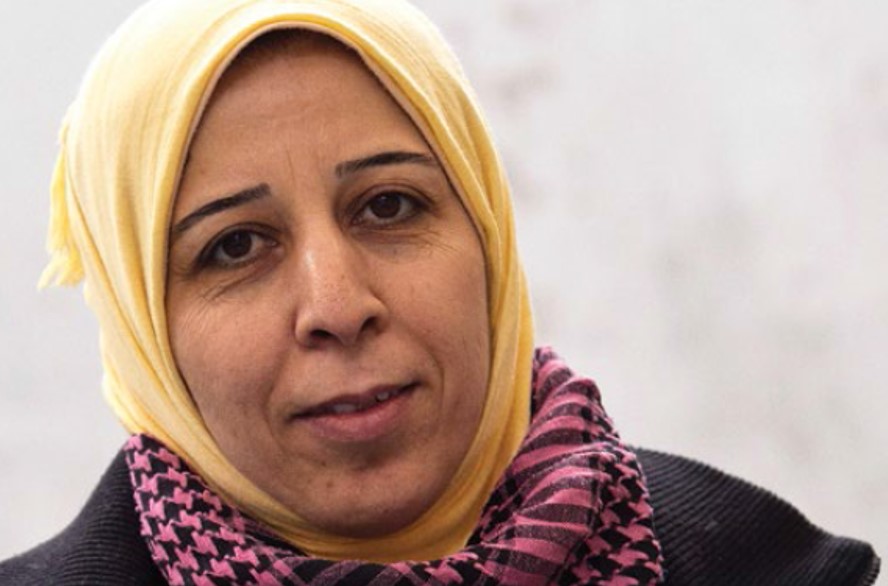The Terrorism Solution
August 1, 2015

Souad Nawfal is a short, hijab-wearing Muslim in her early 40s who took on ISIS and won—a small victory at least. When ISIS overran Raqqa, Syria, where she lives, she says, “I couldn’t witness innocent people being arrested, plundered, kidnapped and executed by ISIS. We were silent for 43 years of the [previous] regime’s oppression and I wouldn’t accept another tyrant.”
She decided to protest and asked others to join her. None did. So, beginning in July 2013, for two hours a day, she bravely stood outside ISIS headquarters with handwritten protest signs. They said such things as, “Don’t tell me about your religion, but show it in your
behaviour!” and “No for oppression, no for unjust rulers, no for atonement, and yes for thinking!”
She was cursed, spat on and manhandled. “Every day they’d point a Kalashnikov [rifle] at my head and threaten to shoot me.”
Despite this, she survived. And over time, others joined her. After three months, they succeeded in seeing a small number of activists released.
Her open protest in an extremely dangerous context and modest success demonstrate the validity of nonviolent action.
Nonviolent Action
Sometimes called nonviolent resistance, this is an attempt to achieve goals through protests, civil disobedience, non- or limited cooperation, but always without violence. The first recorded such nonviolent action is found in the biblical book of Exodus when midwives refused to follow a command to kill Israelite boys at birth.
In the time of Jesus, when Pilate was appointed governor of Palestine, he infuriated Jewish leaders by bringing military standards bearing the emperor’s image into Jerusalem. To have these images in the city was against Jewish teaching and the leaders begged him to take them down.
When he refused, they staged a lie-in—on his floor—for five days. On the sixth day he surrounded them with soldiers ready to kill them if they didn’t stop their protest. They threw themselves to the ground, saying they were ready to die for their cause.
Pilate ordered the immediate removal of the offending standards.
Nonviolent action doesn’t always work, of course. It didn’t stop Hitler, but within his regime, it saved tens of thousands of Jews when individuals disobeyed Nazi law.
The best-known, successful nonviolent protests in the past 100 years have been those of Mahatma Gandhi and Martin Luther King Jr. For Gandhi it was a 28-year struggle, but his leadership of India’s peaceful
protests freed the nation of British rule.
Gandhi became an inspiration for King, who said, “Christ furnished the spirit and the motivation and Gandhi furnished the method.” When King had his house bombed, an angry crowd gathered ready to respond with violence. He told them, “Don’t get your weapons. . . . We are not advocating violence. We want to love our enemies. . . . We must meet hate with love.”
In quoting Jesus’ words about loving enemies (Matthew 5:44), King was tapping into basic Christian teaching that hasn’t always been seen in relationship to these kinds of conflicts or war. Ghandi and King demonstrated it can work.
Christians have long attempted to reconcile Jesus’ teaching with war. The early theologian and philosopher Augustine was one of the first to question when it is right to go to war and the right conduct in war. He was trying to describe a Just War. That discussion is ongoing, but a basic premise is that killing is a last resort.
The Nonviolence Advantage
Gene Sharp, an academic whose work on nonviolent action has him nominated for this year’s Nobel Peace Prize, writes, “While the twentieth century was one of great violence and extreme dictatorships, genocide, nuclear weapons, massive slaughters, terrorism and world wars, it was also a century of a multitude of nonviolent struggles.”
Not all the protests during the socalled “Arab Spring” (late 2010–12) were nonviolent, but several were— with varying degrees of success. The leaders of Tunisia, Egypt, Libya and Yemen were forced from power. The fall of the Soviet Empire was mostly nonviolent. Communist leaders in East Germany finally gave way after a series of candlelit marches following prayer meetings in churches.
The numbers in these protests grew until half a million people marched in East Berlin on November 4, 1989. Four days later the leadership resigned. The next day people started tearing down the Berlin Wall.
Ron Sider, in Nonviolent Action, gives advantages for a peaceful approach:
It follows Jesus’ lead. While most Christians accept the concept of a Just War, they often forget that it is to be engaged only after all reasonable alternatives are attempted. Nonviolent action is reasonable.
Fewer people are killed. India’s nonviolent struggle against the British took longer than Algeria’s war against the French—28 years (1919– 46) compared to seven (1955–61)— but only 8000 Indians died compared to a million Algerians. That’s 1 death in 400,000 compared to 1 in 10.
There is greater success. One report notes: “The most striking finding is that between 1900 and 2006,
nonviolent resistance campaigns were nearly twice as likely to achieve full or partial success as their violent counterparts.” And, they are more likely to lead to a democratic society.
The “Law of Love”
In a letter to Gandhi, Russian writer Leo Tolstoy wrote, “In Christianity the law of love had been more clearly and definitely given than in any other religion” and that Christians recognise it. Then he bemoans “a contradiction between love . . . and the employment of force.”
Those who take the words of Jesus—“love your enemies”—seriously would surely want to attempt nonviolent resolutions to conflict. Particularly war. Over the past 100 years a broad range of faith beliefs and non-beliefs have taken the nonviolent path to find solutions to, at times, horrific situations. This can only be a better way.
It needs to be noted, nonviolence calls for a commitment as serious as any soldier’s because there are risks, and a choice to not respond with force of arms. On February 2, 2011, 26 protestors were killed in Cairo’s Tahrir Square when government supporters attacked.
Despite the sacrifice and the dangers that can be associated with nonviolent techniques, to put your life on the line for others is the greatest gift of love.
Liberian women pray for peace
When Charles Taylor became president of Liberia in 1997, violence followed. His Anti-Terrorism Unit forced young boys to be child soldiers. Rape was common. Taylor’s opponents were tortured or killed. And a civil war was killing the men of Liberia. Many women became heads of families and it was women who rescued their country.
In 2003, Leymah Gbowee, a 31-year-old single mother of four, began to pray each morning for peace. One night she had what she calls a vision telling her to gather other women to pray for peace.
While terrified by the thought, she spoke at churches across the country inviting women to join her in prayer. At one church a Muslim woman stood up and told the group that she would take the same message to Muslim women: “We will work together to bring peace to Liberia.”
Every Tuesday women gathered for prayer. Then they began to hand out leaflets with messages such as: “We are tired! We are tired of our children being killed! We are tired of being raped! Women, wake up—you have a voice in the peace process!”
Then, in a series of daily protests along the route Taylor took to parliament and back, 2500 women made their point with placards. A few days in, they gave him three days to respond to their demands. With no response, they picketed the parliament building, not allowing anyone in or out of the carpark.
After three days, the parliamentary speaker came out and said Taylor would meet them to discuss their demands. In these talks he agreed that, if the women could get the rebels to the table, he would begin negotiating a peace.
This was the beginning of peace for Liberia, the beginning of the end for Taylor, and led to free elections and to the first female president in Africa, now re-elected and in her second term.
In 2011, Gbowee was awarded the Nobel Peace Prize for her “nonviolent struggle for the safety of women and for women’s rights to full participation in peace-building work.”
Importantly, Gbowee began a reconciliation approach that allowed everyone to help rebuild their nation. There’s still a long way to go (the recent Ebola crisis did not help), but there is peace.









